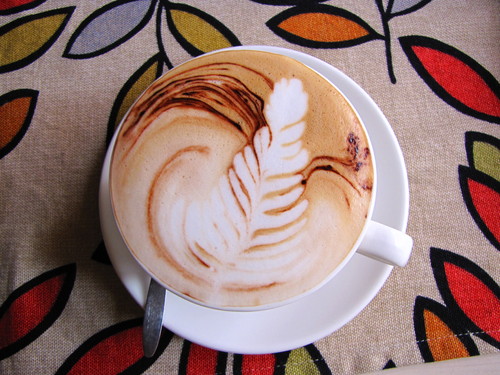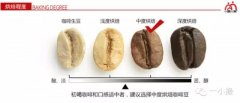How to evaluate the quality of milk foam? Criteria for judging the quality of milk bubbles
Standard one: milk foam should be delicate.
For example: be delicate (what is delicacy? No one can explain it in precise words), like velvet (what is velvet? As a national protected animal, how many people dare to hit a swan and touch its velvet? To be slippery (milk is the most slippery, just like this guy is lazy and has nothing left in your mouth), there are numerous such extremely vague adjectives. But there is a saying that is very close to the delicate state of milk foam: the surface should be reflective. This statement is very objective and direct, at least it can be used as a standard to be seen by the naked eye.
The main reason for saying so much here is to give you a standard that can be touched by the hand, seen by the eye and heard by the ear. Once this standard is mastered, we will discuss the comprehensive impression formed in the mouth through the oral mucosa, taste buds and through the internal nostrils of the palate, that is, the question of taste.
So what are these standards? The surface should be able to reflect light first.
Standard 2: no coarse bubbles
There is no coarse foam on the surface. This requires a lot of foam control, when larger than the diameter of 1mm are called coarse foam.
Standard 3: the foam temperature is 60 degrees Celsius-65 degrees Celsius
In the case of the same amount of milk (all added to the position at the bottom of the cylinder mouth), no matter 60% full or 70%, 80%, 90% or full, the temperature should be the same, and the number of foam can not be adjusted by the temperature.
Standard 4: don't waste milk.
Make two cups of cappuccino, using the WBC standard cup. Pour the foam into the cup and leave no drop in the jar. If this standard is sublimated a little bit, it will become: just hit as many milk bubbles as you want (except for micro-bubbles such as macchiato), which is very difficult to practice and takes a long time.
The above four standards have been achieved, at least it can be regarded as a good bottle of milk foam in terms of vision, feel and technology. Earlier also mentioned a sense of hearing, which depends on the milk, just hit the milk foam, must not hear a very continuous burst sound, which can ensure the persistence of the milk foam in the cup.

Important Notice :
前街咖啡 FrontStreet Coffee has moved to new addredd:
FrontStreet Coffee Address: 315,Donghua East Road,GuangZhou
Tel:020 38364473
- Prev

What is the Australian white coffee Flat White introduction? Differences in taste characteristics between Australian white coffee, latte and dirty
Australian-style white coffee, unlike cappuccino, 1-beat-3 Espresso,1/3 hot milk, 1-pound-3 milk foam, and sprinkle some chocolate powder or cinnamon powder on the formed micro-convex surface. The Australian white is named F because it is smoother and consistent with the cup noodles, highlights the fineness of the milk foam above, and the temperature is milder.
- Next

Coffee Roasting & Coffee Flavors Boutique Coffee Roasters
Deep baking highlights wood incense Light baking can highlight the bright smell of flowers, grass, fruit acid fragrance, but there is no medicine to save the deep baking fans love the incense, stuffy fragrance, choking fragrance and alcohol of resin components, which is the product of Mena reaction and dry distillation. (resin component: pine and cedar families of conifers, both of which secrete oleoresin compounds and have a pungent aroma to resist pests or squirrel nibbling) dry distillation
Related
- Beginners will see the "Coffee pull flower" guide!
- What is the difference between ice blog purified milk and ordinary milk coffee?
- Why is the Philippines the largest producer of crops in Liberia?
- For coffee extraction, should the fine powder be retained?
- How does extracted espresso fill pressed powder? How much strength does it take to press the powder?
- How to make jasmine cold extract coffee? Is the jasmine + latte good?
- Will this little toy really make the coffee taste better? How does Lily Drip affect coffee extraction?
- Will the action of slapping the filter cup also affect coffee extraction?
- What's the difference between powder-to-water ratio and powder-to-liquid ratio?
- What is the Ethiopian local species? What does it have to do with Heirloom native species?

